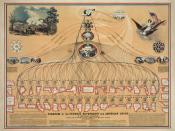The American education system has undergone several key changes within the past century. These changes, while meant to improve the overall quality of the education system, have yielded precious little results when compared to the rest of the world. Yet, each of these "improvements" has caused the costs of education to skyrocket. As of 2006, The United States spends the more per student than any other industrialized nation and has fallen in international educational rankings. Many attempts have been suggested to improve the condition of the education system within the nation, but none have yielded the dramatic results that are often promised.
Knowing the statistics on cost per student and international rank does not explain the current state of American education. The statistics actually confuse the matter. It has often been said that "you get what you pay for", but we are paying for the best and receiving nothing of the sort.
The major issue regarding education on an international level is that there are no national standards in the American education system. The federal government has surprisingly little to do with the education of American citizens. Even when the central government attempts to improve the overall quality of its academic system it must do so within the constraints of state run education departments.
The recently enacted "No Child Left Behind Act" is a prime example of the federal inability to regulate state run public schools. The N.C.L.B. act attempts to use the financial power of the federal government to stimulate improvement within public schools. These funds are meted out based upon the scores of any individual school on required tests in English and Math. However, these tests are designed and run by each individual state. This creates an inequality within the nation. The higher-ranked states, such as New York,


